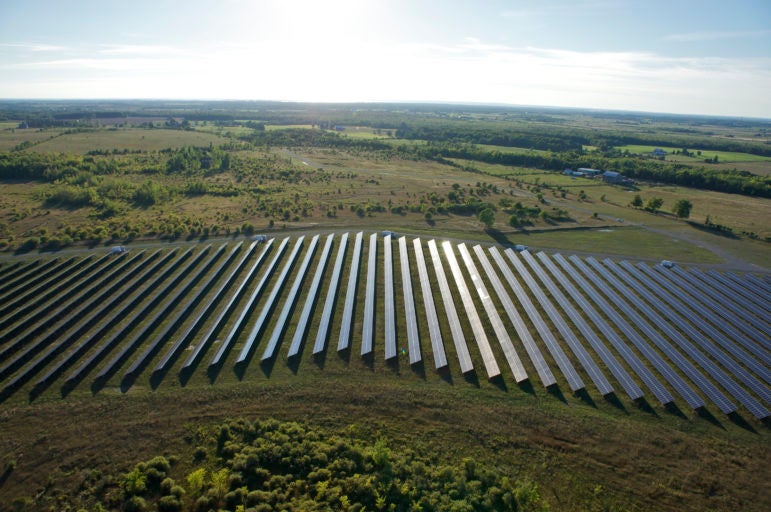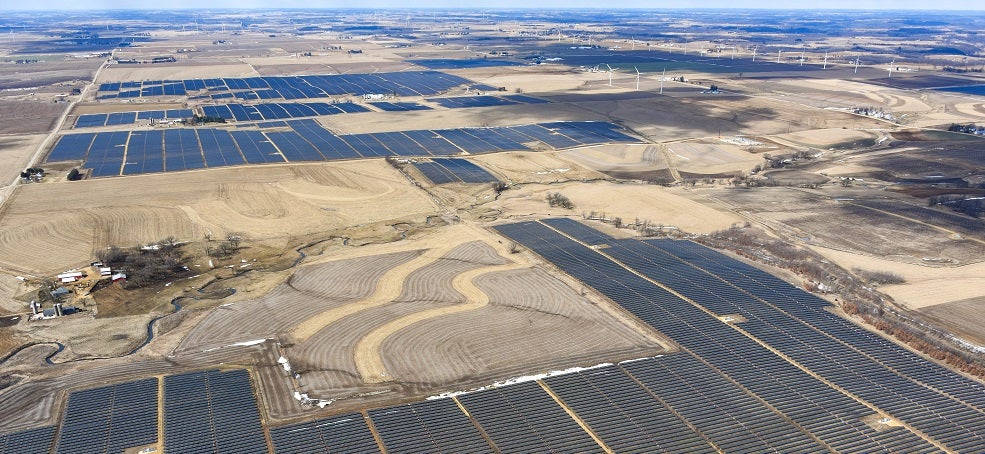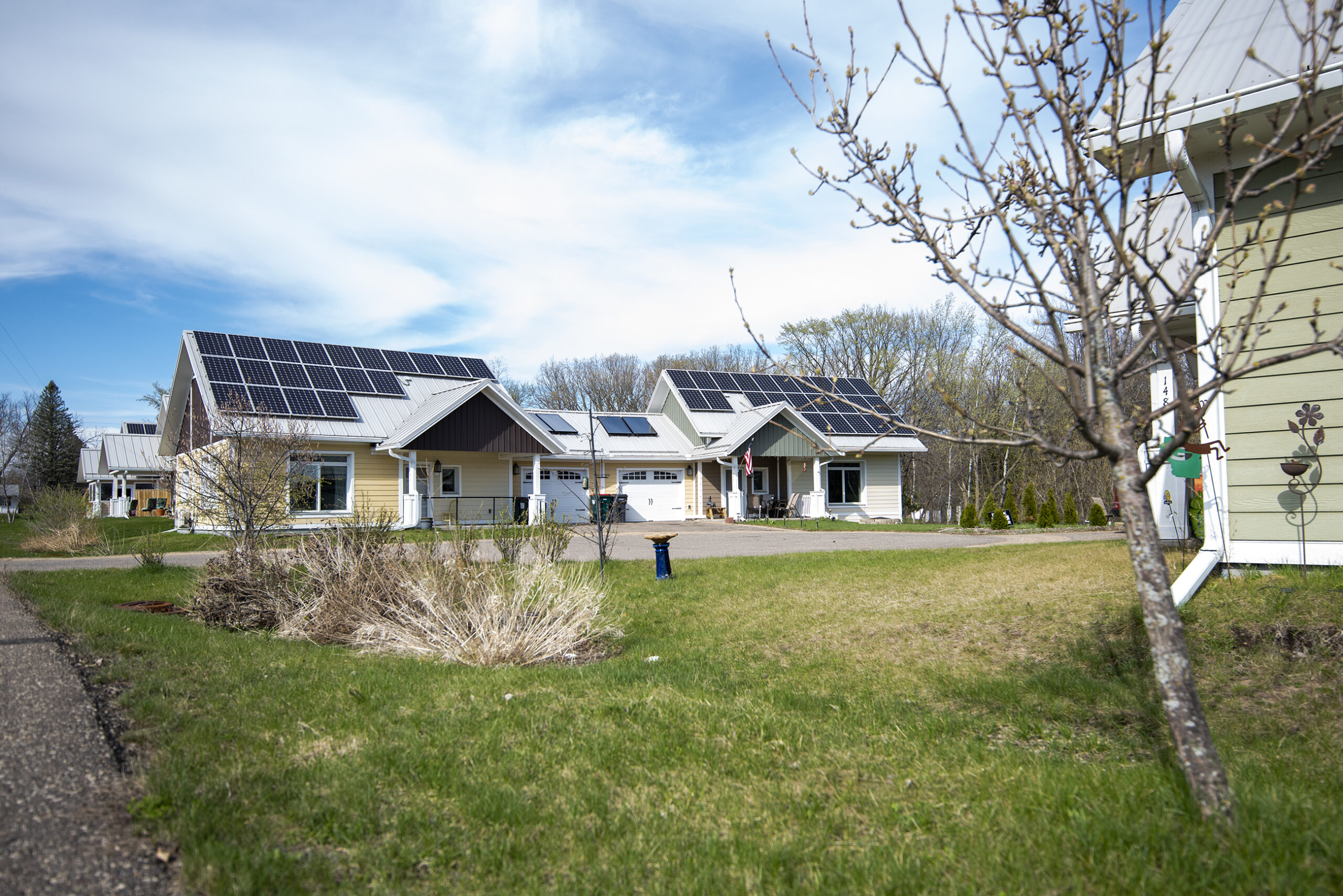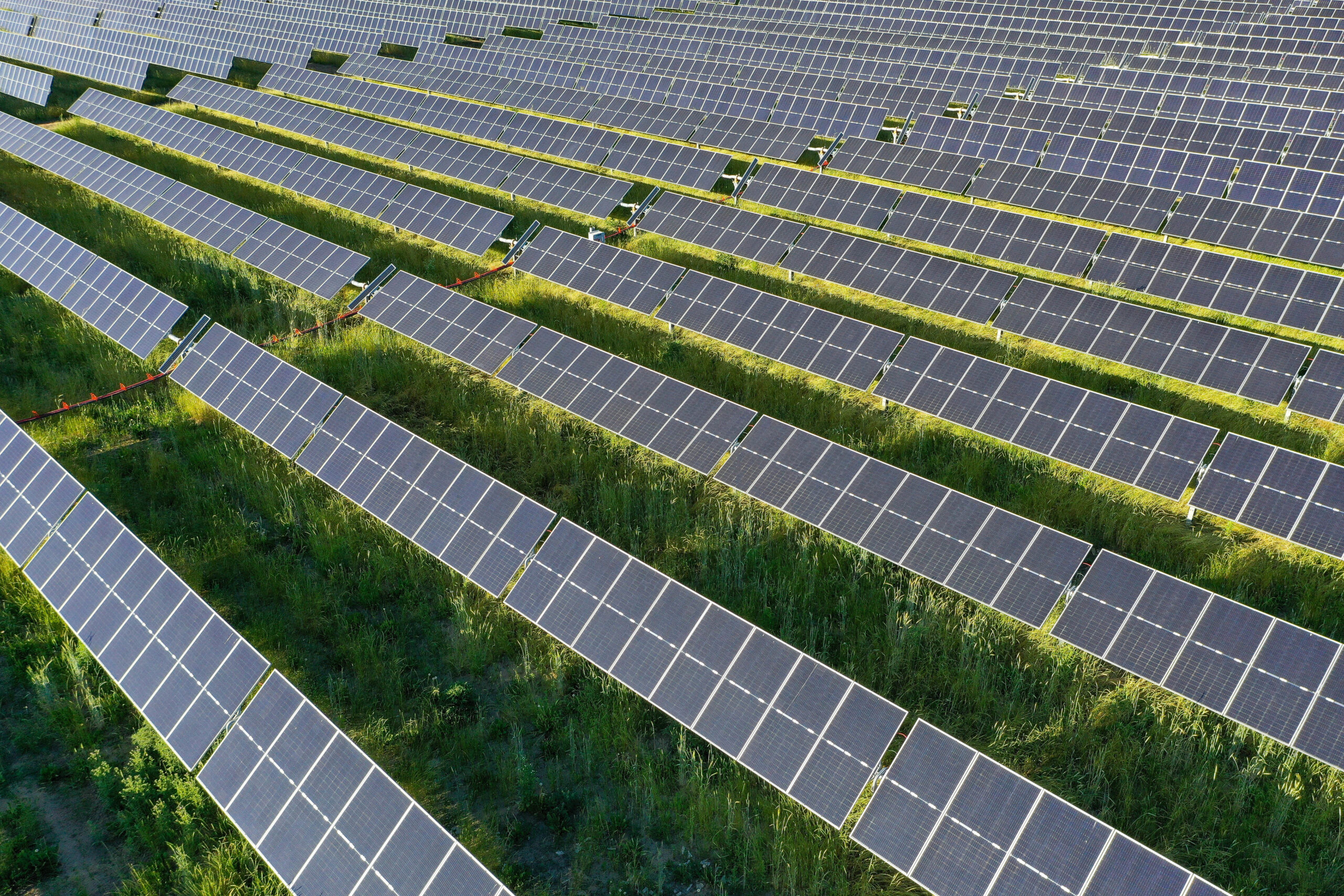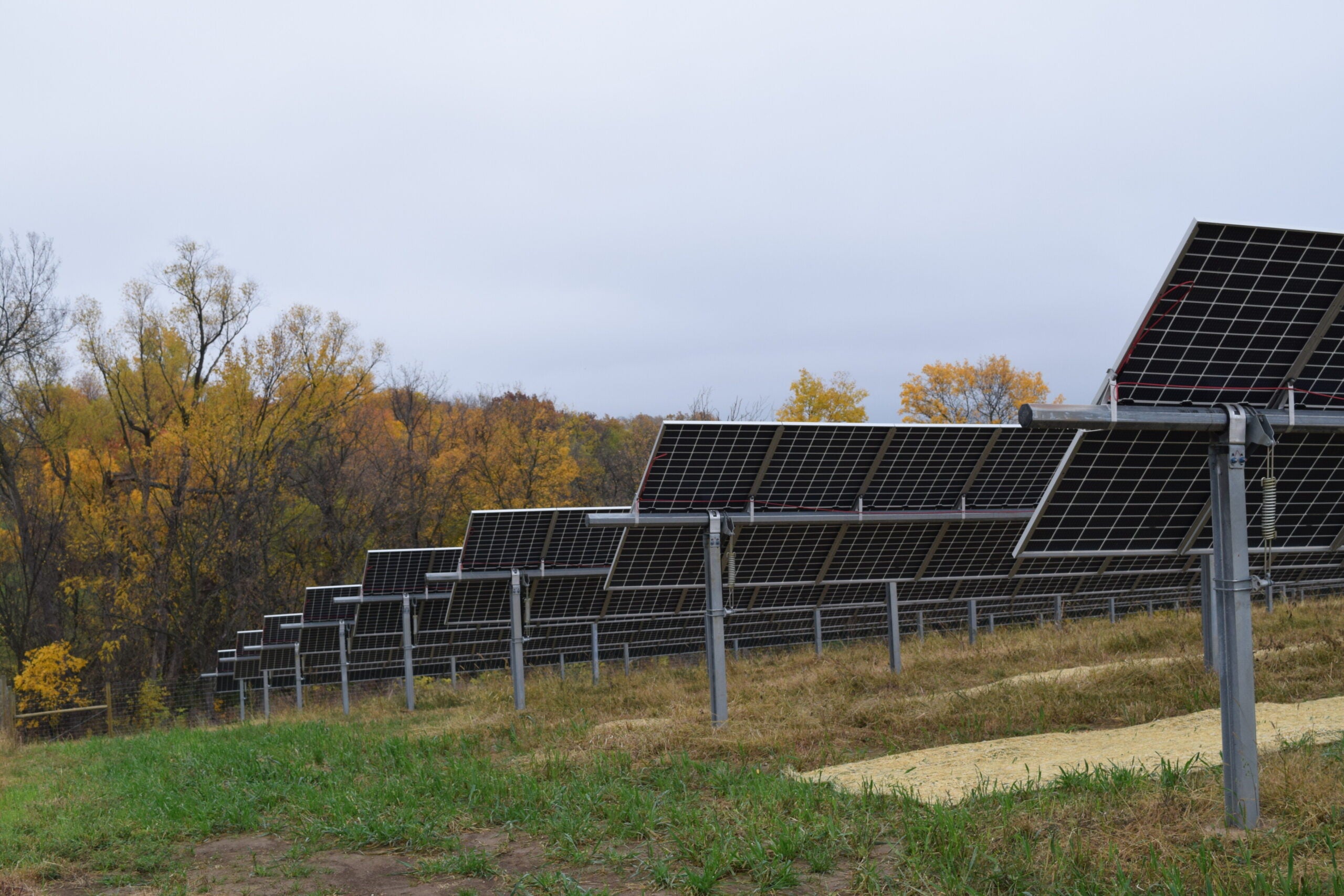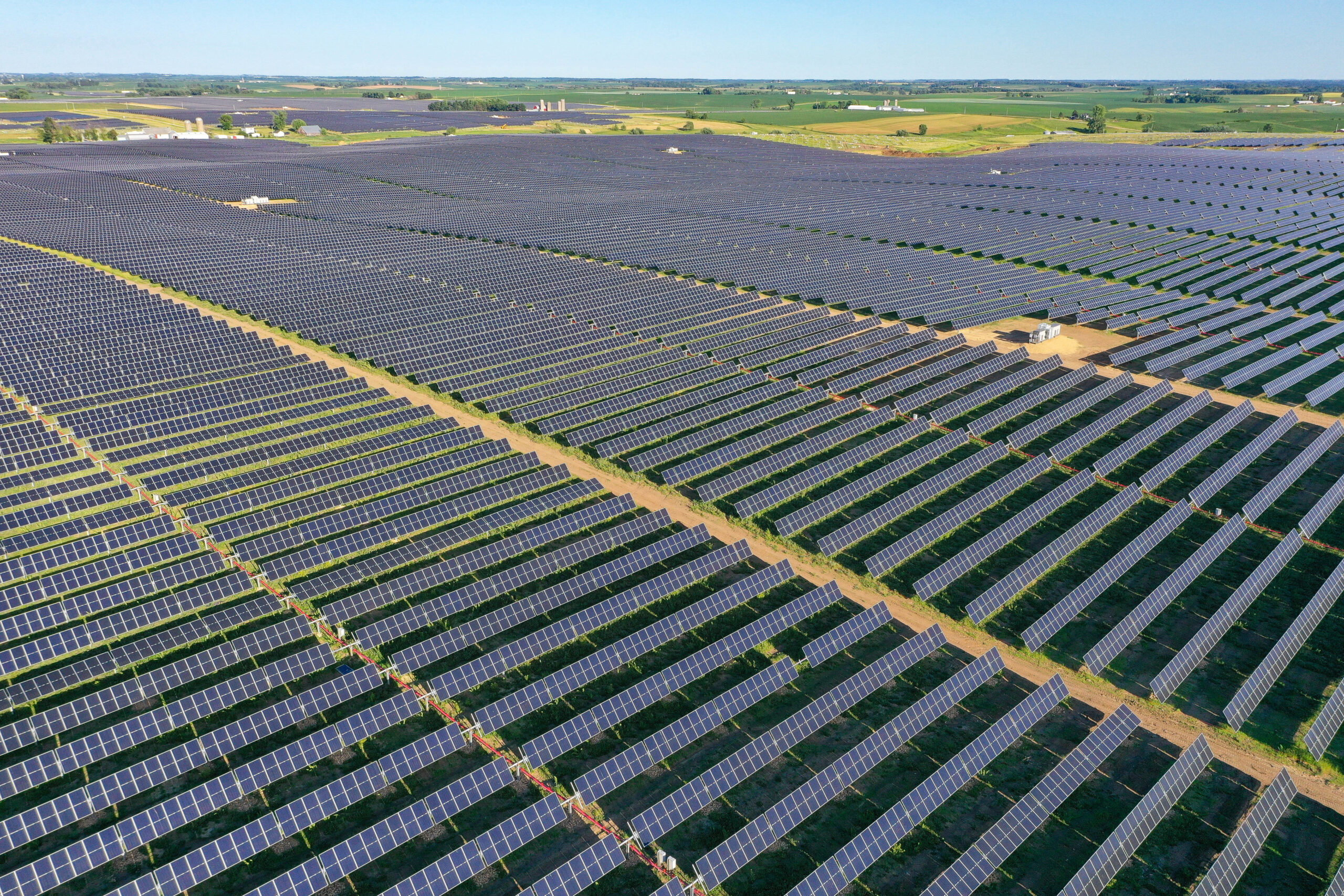The coronavirus pandemic delayed the first phase of construction on the state’s largest solar farms. Now that work is underway, trade tariffs could delay the second phase of the project.
The Wisconsin Public Service Commission approved the 300-megawatt Badger Hollow Solar Farm in Iowa County last year, which could generate enough electricity to power around 77,000 homes.
Utility providers Wisconsin Public Service (WPS) and Madison Gas and Electric partnered to acquire 150 megawatts in the first phase of the project known as Badger Hollow I. In August, Madison Gas and Electric and We Energies partnered to purchase and construct the remaining portion of the farm known as Badger Hollow II.
Stay informed on the latest news
Sign up for WPR’s email newsletter.
In April, WPS and Madison Gas and Electric told regulators the first phase of the farm would not come online until April 2021. The utilities said the project was delayed about four months due to the COVID-19 crisis.
Now, We Energies and Madison Gas and Electric have extended construction on the second portion of the project by one year due to tariffs that may impact the type of solar panels being used for the project, according to Brendan Conway, spokesperson for WPS and We Energies.
“That is mostly to allow Invenergy time to secure the solar panels,” said Conway.
The extension is anticipated to allow Invenergy, the project developer, to acquire the panel without significantly increasing costs for utilities and ratepayers. The second phase of the project is expected to run $194.9 million.
The panels being installed that may be subject to tariffs are known as bifacial panels. The Trump administration withdrew their exemption from tariffs in April. But the U.S. Court of International Trade blocked that move, and the matter has yet to be settled.
The use of bifacial solar panels is expected to grow because they can pick up light from both sides of the panel, according to Michael Vickerman, policy director for RENEW Wisconsin.
“So the productivity increase from bifacial panels is something that both utilities and developers really want to lock in on,” said Vickerman.
Invenergy is also proposing to develop the Paris Solar Farm in Kenosha County, which would produce 200 megawatts of power if approved by regulators. This month, commission staff requested and received an extension on review of the project due to the pandemic and the number of solar generating facilities under review.
Even so, Vickerman said the outlook is good for solar projects in Wisconsin despite delays due to COVID-19 and trade issues.
“Solar is still looking mighty good in this state and other states as well,” he said.
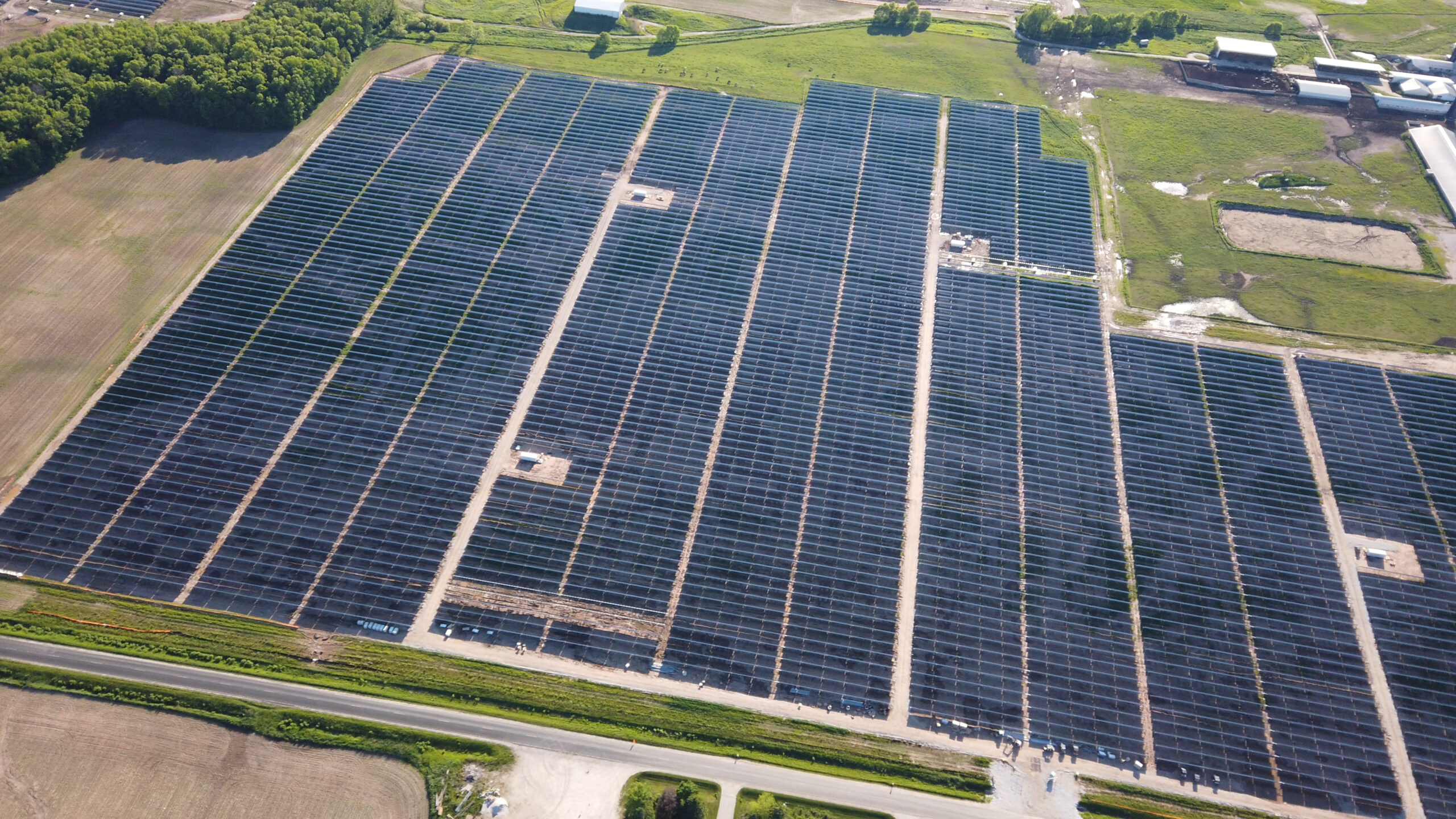
Photo courtesy of WEC Energy Group
Solar is expected to generate a little more than 4 percent of the state’s electricity by 2026, according to the commission. Utility-scale solar projects made up just 0.1 percent of all generation two years ago.
Conway noted that construction is underway on the first phase of Badger Hollow, with solar panels on site and ready to be installed.
Work is also underway on the 150-megawatt Two Creeks Solar Farm in Manitowoc County, which is being developed by NextEra Energy Resources. WPS and Madison Gas and Electric are owners of the project, which is slated to be completed by the end of the year. Together, Two Creeks and Badger Hollow are expected to cost $389.7 million.
“They believe they’ll have about half of the half a million solar panels up probably sometime in this month or early next month,” said Conway.
Vickerman said work is also expected to begin on the 149-megawatt Badger State Solar farm in Jefferson County and 100-megawatt Point Beach Solar farm in Manitowoc County.
He added the Paris Solar Farm is one of four large-scale utility solar projects that are active proposals before state regulators. The other three include the 150-megawatt Wood County Solar Project, the 150-megawatt Onion River Solar project in Sheboygan County and the 200-megawatt Grant County Solar project.
The Grant County project is also part of Alliant Energy’s $900 million plan to buy six solar farms representing 675 megawatts of power.
The projects that are moving forward in the state come at a time when the solar industry has lost about 72,000 jobs nationwide through May with losses expected to grow, according to Abigail Ross Hopper, CEO and president of the national trade group Solar Energy Industries Association. Even so, she said utility-scale solar projects have been less affected than residential or commercial developments.
“Construction was deemed essential work under a lot of the stay-at-home orders,” she said, adding that developers pivoted to meet social distancing guidelines.
However, she anticipates investors will be less willing to support solar projects as a result of the economic downturn.
“That is an immediate challenge for projects that are not yet under construction and will be, we anticipate a problem going forward for projects to get financing,” she said.
The Solar Investment Tax Credit has provided incentive to investors to support growth in solar energy, but the value of the tax credit already decreased from 30 to 26 percent this year. It’s set to decrease to 10 percent for all commercial solar projects after 2021. The association is asking Congress to push out the step down of the incentive to help developers make up for time that’s been lost during the pandemic.
Editor’s note: An earlier version of this story said WPS and MG&E are purchasing power from Two Creeks, but they are owners of the project. The story was updated at 8:50 a.m. on Monday, July 13, 2020.
Wisconsin Public Radio, © Copyright 2024, Board of Regents of the University of Wisconsin System and Wisconsin Educational Communications Board.

